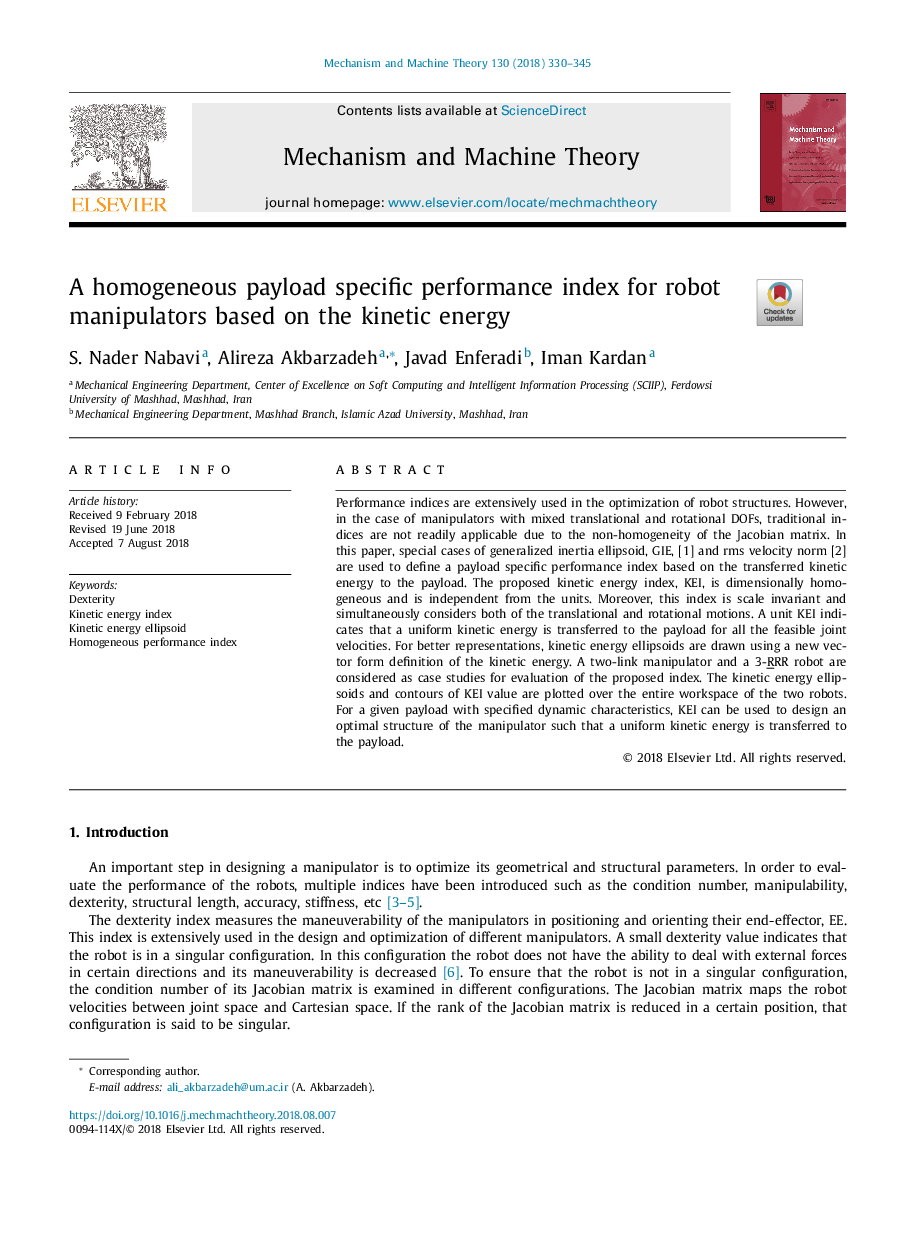| Article ID | Journal | Published Year | Pages | File Type |
|---|---|---|---|---|
| 10133970 | Mechanism and Machine Theory | 2018 | 16 Pages |
Abstract
Performance indices are extensively used in the optimization of robot structures. However, in the case of manipulators with mixed translational and rotational DOFs, traditional indices are not readily applicable due to the non-homogeneity of the Jacobian matrix. In this paper, special cases of generalized inertia ellipsoid, GIE, [1] and rms velocity norm [2] are used to define a payload specific performance index based on the transferred kinetic energy to the payload. The proposed kinetic energy index, KEI, is dimensionally homogeneous and is independent from the units. Moreover, this index is scale invariant and simultaneously considers both of the translational and rotational motions. A unit KEI indicates that a uniform kinetic energy is transferred to the payload for all the feasible joint velocities. For better representations, kinetic energy ellipsoids are drawn using a new vector form definition of the kinetic energy. A two-link manipulator and a 3-RRR robot are considered as case studies for evaluation of the proposed index. The kinetic energy ellipsoids and contours of KEI value are plotted over the entire workspace of the two robots. For a given payload with specified dynamic characteristics, KEI can be used to design an optimal structure of the manipulator such that a uniform kinetic energy is transferred to the payload.
Keywords
Related Topics
Physical Sciences and Engineering
Engineering
Industrial and Manufacturing Engineering
Authors
S. Nader Nabavi, Alireza Akbarzadeh, Javad Enferadi, Iman Kardan,
